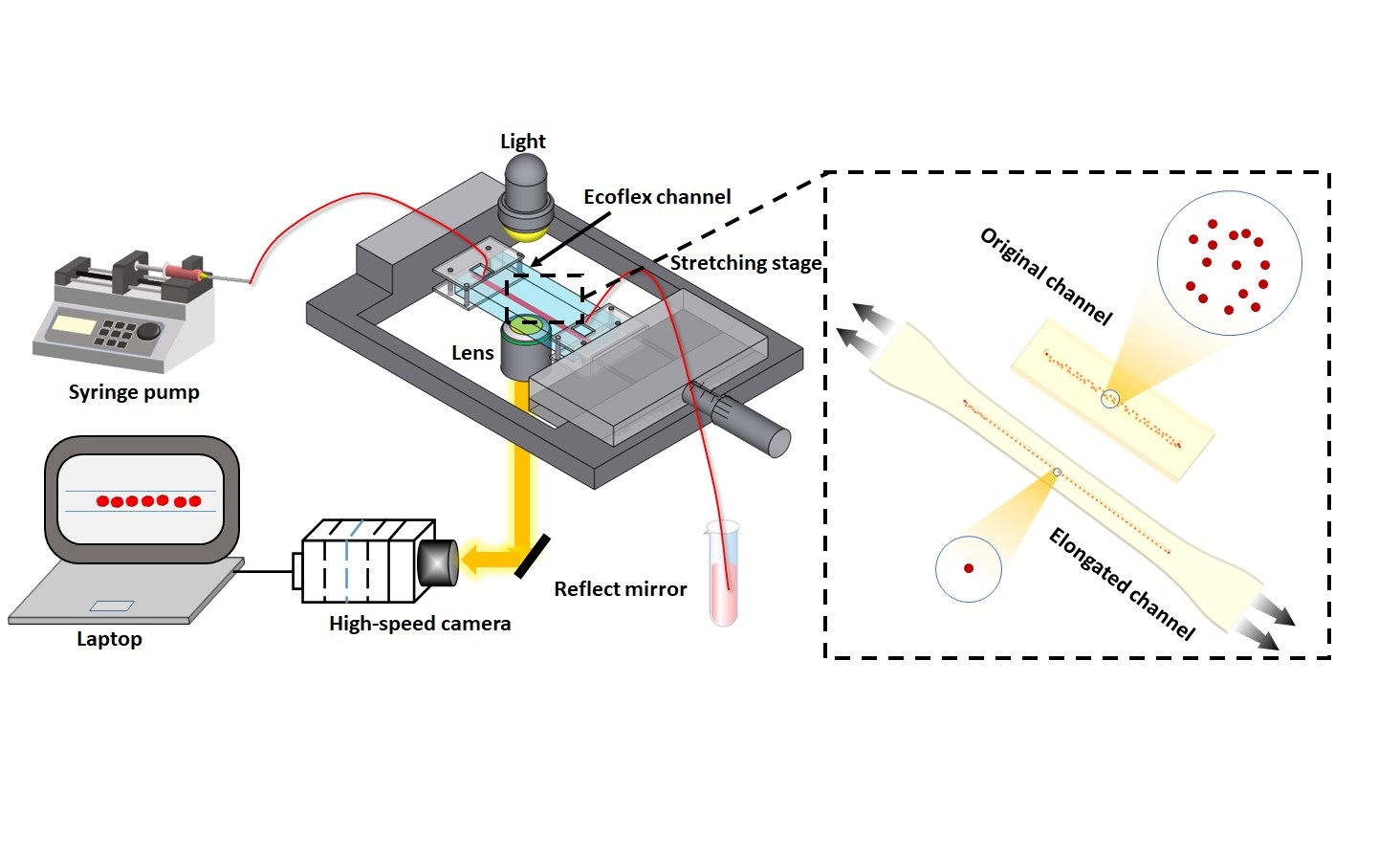Recently, the research team led by Dr. Yan Sheng from the Institute of Advanced Study at Shenzhen University published their work on " Size-tunable elasto-inertial sorting ofHaematococcus pluvialisin the ultra-stretchable microchannel " in Analytical Chemistry (IF=7.4). Jia Zixuan and Wu Jialin, master students of the Institute for Advanced Study, Shenzhen University, are the co-first authors of the paper, and Dr. Yan Sheng is the sole corresponding author. Shenzhen University's Institute of Advanced Study and College of Mechatronics and Control Engineering are corresponding affiliations. This work was also supported by Dr. Zhang Jun from Griffith University in Australia, as well as Guangdong Basic and Applied Basic Research Foundation and Shenzhen Natural Science Fund.
Haematococcus pluvialisis a good source of astaxanthin, which reduces oxidation in the human body, treats inflammation, and even slows the growth of breast and skin cancer cells. Since the size ofHaematococcus pluvialisis often closely related to astaxanthin yield, size-based microalgal separation has far-reaching significance for high-value algae extraction and algal directed evolution. Elasto-inertial microfluidics is able to achieve three-dimensional (3D) focusing in a simple straight channel without any external force fields or complex channel structures. Particle size is a predominant parameter for elasto-inertial focusing and separation. The cut-off threshold of particle separation is highly dependent on the blockage ratio. For microalgal cell separation, the cell size is pre-determined and tuning the blockage ratio requires changing the diameter of the microfluidic channel. However, the channel geometry is difficult to alter once a device has been prototyped in the existing rigid microfluidic devices. Therefore, the current rigid devices cannot be used for microalgal separation with the uncertain separation cut-off sizes due to the fixed channel geomerty. Therefore, it is of certain research value to develop a stretchable microfluidic device that can flexibly adjust the geometry of the microfluidic chip in real time and realize the dynamic adjustment of the cut-off size of microalgae separation.
In this work, we proposed a new method to fabricate ultra-stretchable Ecoflex microfluidic devices and developed a size-tunable elasto-inertial separation technique for Haematococcus pluvialis. First, we used liquid metal (gallium) as the sacrifice ink to fabricated the Ecoflex microfluidic devices in one step without the plasma bonding, enabling the maximal 500% strain and over 100% change in the channel size. Then, we systematically studied influences of the flow rate, channel elongation, and particle sizes on the elasto-inertial particle migration, and found that the channel elongation can strongly tune the focusing flow range and critical focusing size of particles. Finally, we demonstrated the sheathless, label-free, dynamic size-tunable separation of Haematococcus pluvialis cells based on the Ecoflex elongation. By modulating the channel geometry, the separation threshold of the channel for microalgal separation can be tuned from 35 μm to 15 μm. Compared with other microalgal separation techniques, our method shows excellent sorting purity, yield, and tunable separation threshold for microalgal separation. Our study is the first report on the wide-range modulation of channel size (>100% change) and size-tunable separation of a single species of microalgal cells with a wide-size distribution (5-65 μm) using the elasto-inertial microfluidics. This size-selective technique for microalgal separation will provide the technical support for the directed evolution of high-yield microalgae.
Original link: https://doi.org/10.1021/acs.analchem.3c02648



